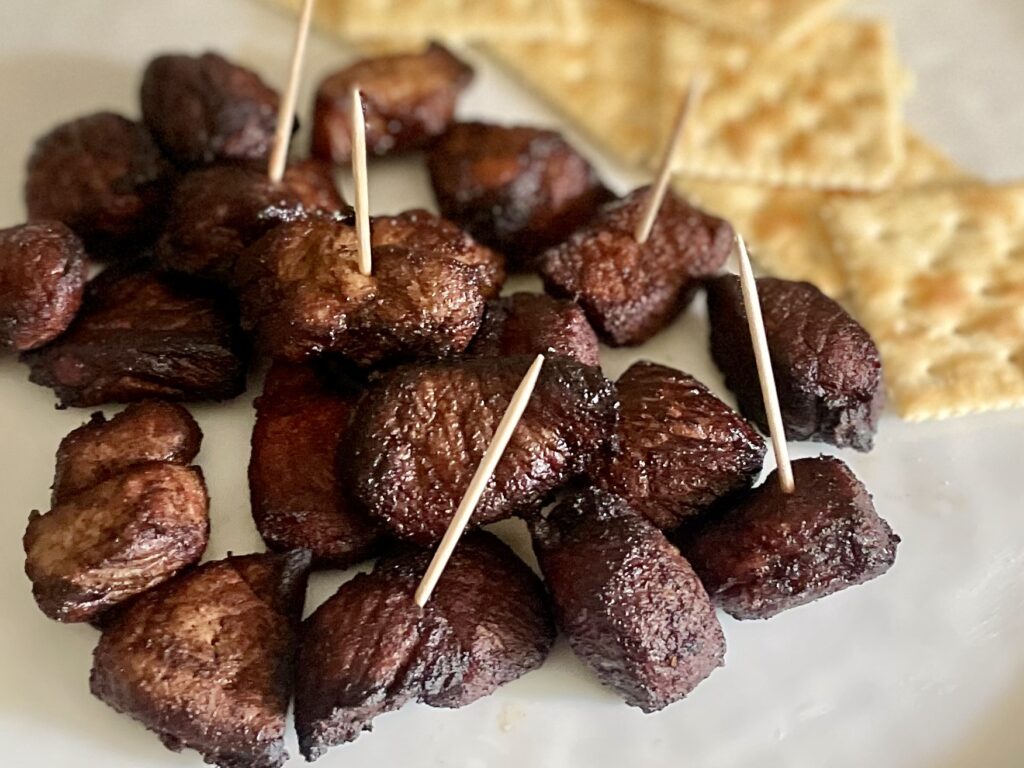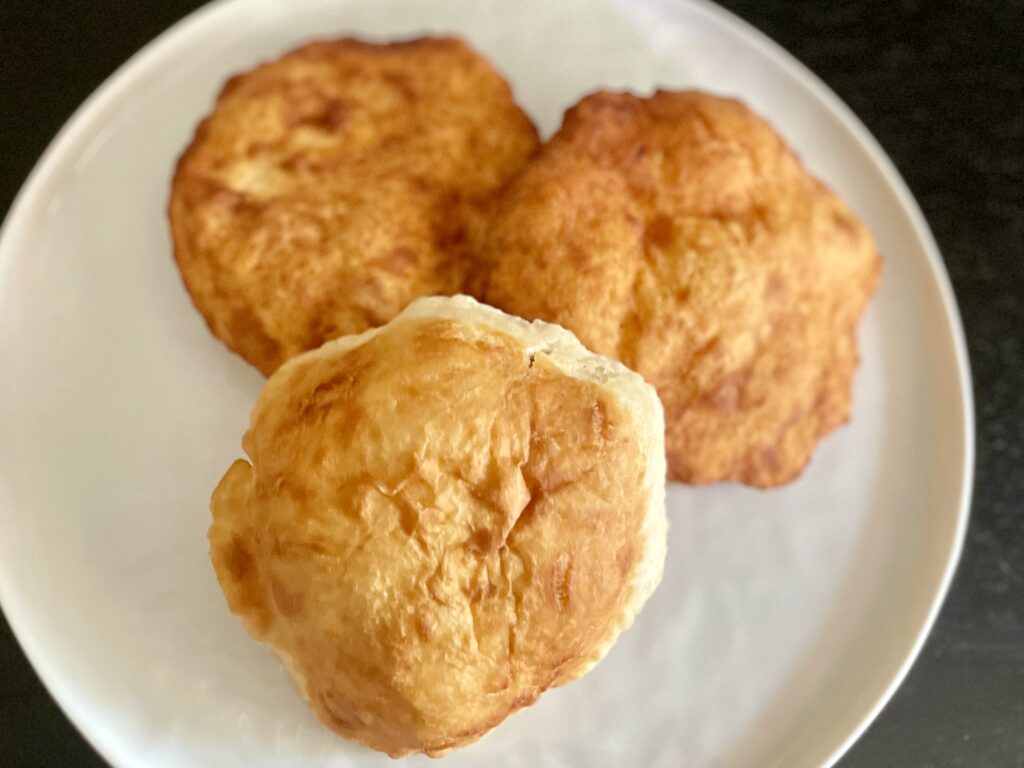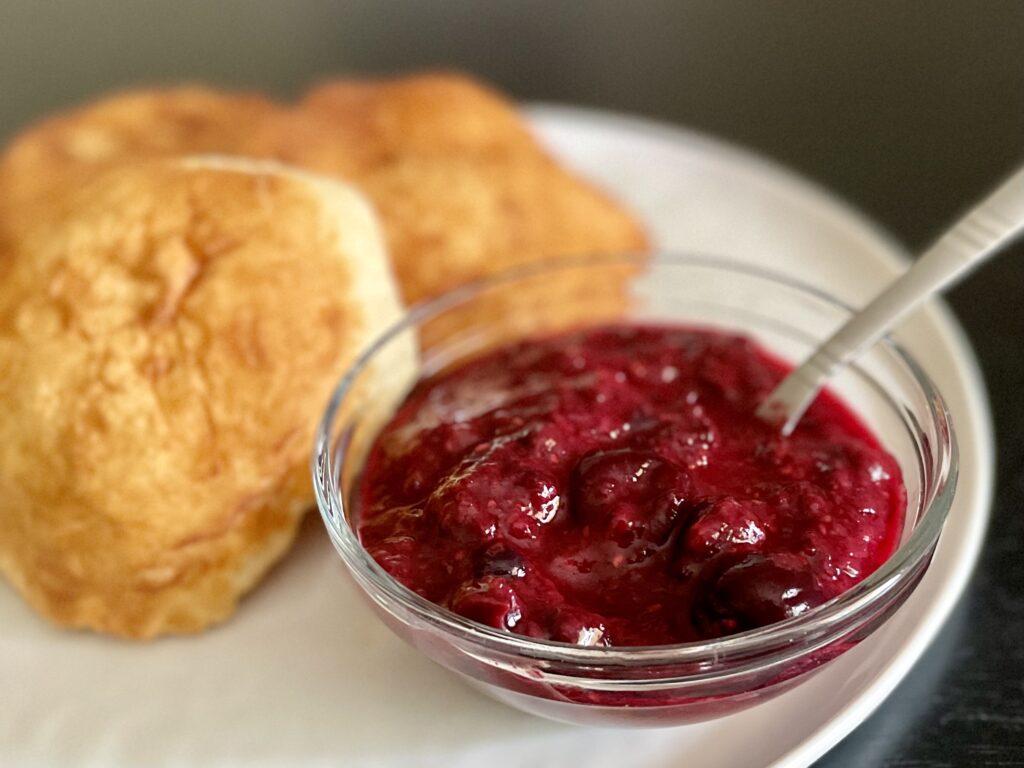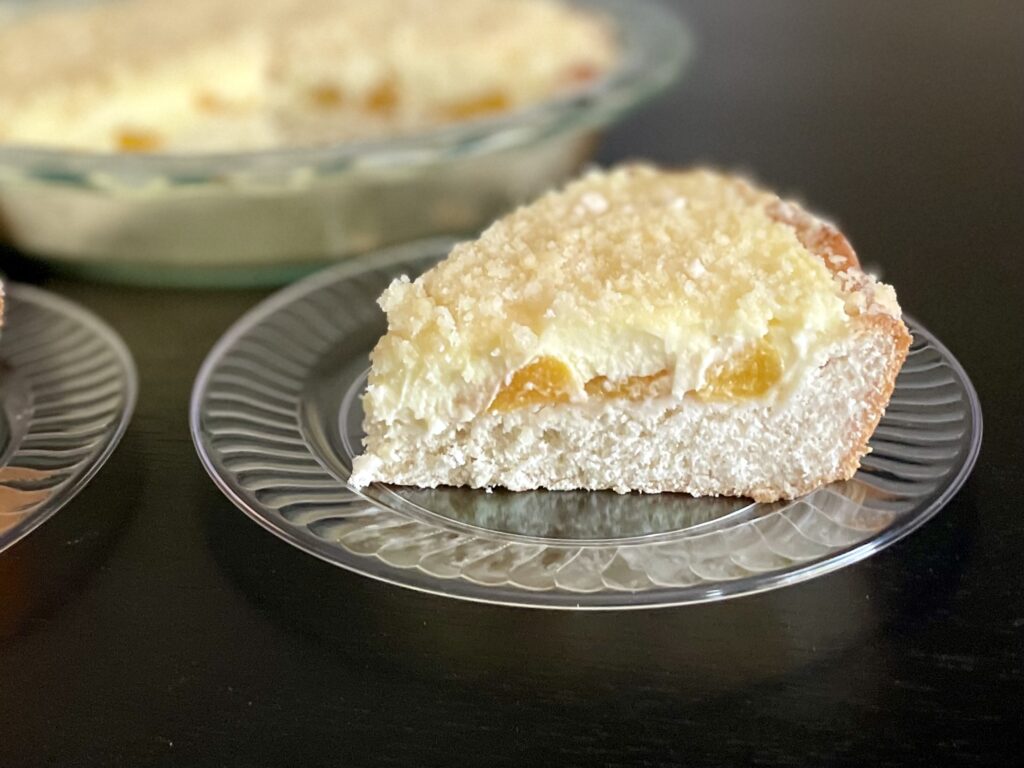Inspired by South Dakota
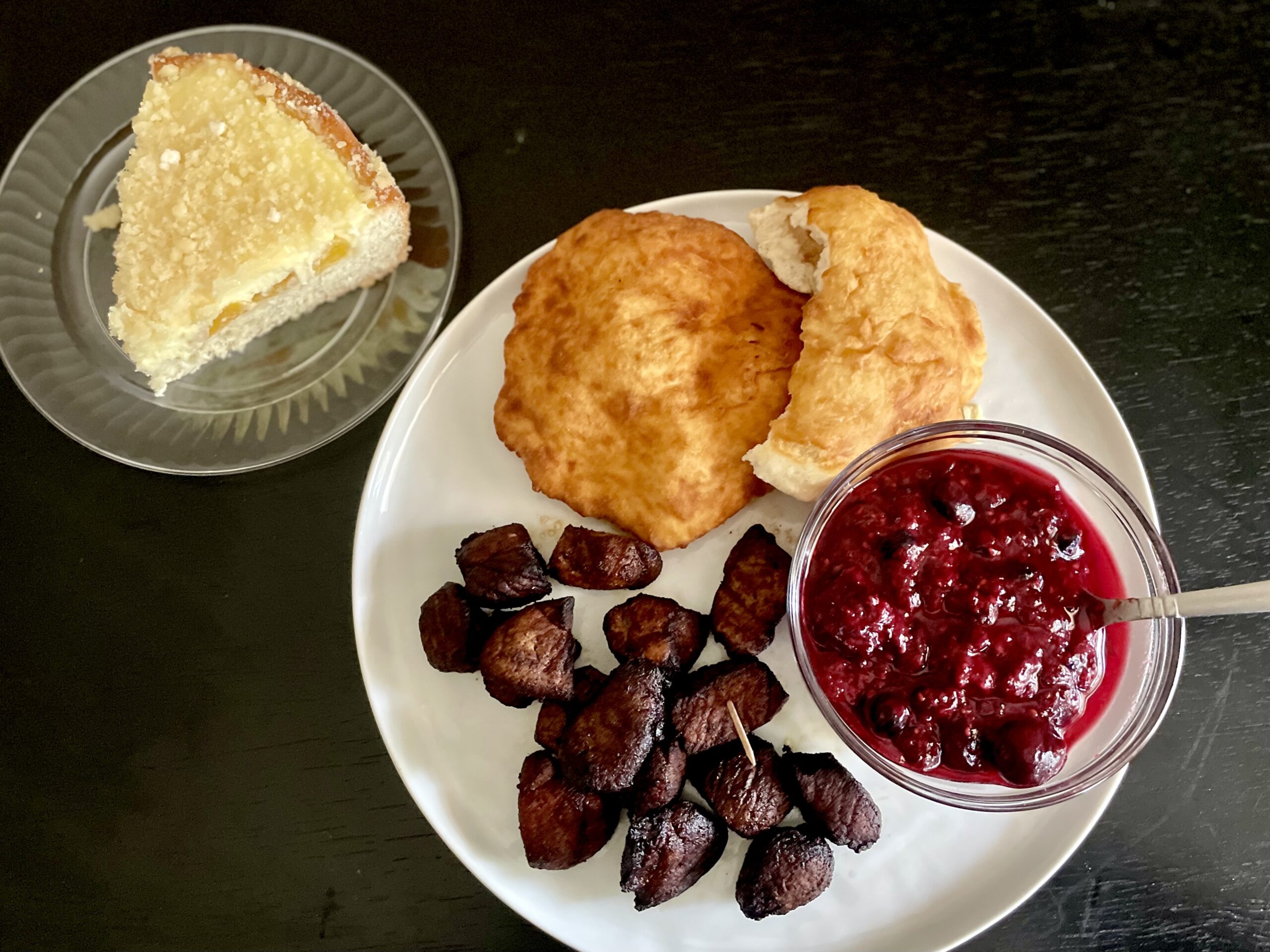
THE MEAL
(Click on the links above to jump to that part of the post!)
Lamb Chislic
Lamb chislic has been a part of South Dakota cuisine since before it became a state! It was brought to the area by German-Russian immigrants in the 1870s. The name likely comes from the Turkish word “shishlik,” which refers to skewered meats (similar to the more-familiar “shish kebab”).
Since many immigrants in South Dakota raised sheep, lamb became the traditional meat for making chislic, but you can also use beef or venison. Some people put the cubes of meat on skewers like a shish-kebab, but for it to be chislic, it needs to be deep fried, not grilled. There are lots of ways to prepare it, but most seem to agree that the simpler the better. And it’s often served with saltines, but I’m not sure why!
This might be my new favorite way to eat lamb! I worried that I wouldn’t like the taste, but the way it cooked in the oil was so nice. Tender, but with a nice charred exterior similar to grilled meat but more consistent. I LOVED it! It’s definitely too expensive to make regularly, but I get why it’s so popular in a state with lots of lamb on hand!
Fry Bread
Fry bread was named South Dakota’s state bread in 2005, in an effort for them to improve race relations between the white majority and the state’s largest racial minority—Native Americans. Unfortunately, the gesture was a bit controversial. It’s a common misconception that fry bread is a traditional Native American food, but the truth is that they didn’t start making fry bread until they had no choice but to use flour rations given them by the U.S. government after they were uprooted to reservations. It was also made for Native children in the boarding schools they were forced to attend. Some Native communities embrace fry bread now, but others see it as a symbol of their oppression and want to distance themselves from it.
Anyway, this is such a simple, basic bread that variations can be found all over the world. It’s basically just flour, salt, water, and some kind of leavening agent like baking soda or yeast. I struggle to cook it the right amount without it being too soft or too hard, but that’s just lack of practice (I have the same problem with tortillas). I just need to make it more often, especially because it’s delicious, whether you’re making fry bread tacos or just eating it on its own with honey, powdered sugar, whatever!
Wojapi (Berry Sauce)
I felt like I needed some kind of fruit or vegetable with this meal, so to go with my fry bread, I made an actually traditional Native American food—wojapi. It comes from hunger-gatherer societies like the Lakota and is usually made with chokecherries and arrowroot, which are both easily found on the South Dakota prairie. I had to make do with a cherry berry blend and cornstarch, but I think it still turned out pretty good! It’s like a berry soup without much sweetener—the natural berry flavor is the strongest. It was really tasty with the fry bread, and I enjoyed the leftovers with vanilla ice cream and waffles too!
Dakota Kuchen
This meal is such an eclectic mix of Native American and European foods! The state dessert of South Dakota is kuchen, which is the German word for “cake,” but is like a mash-up between cake and pie. It was brought to South Dakota around the same time as chislic but Volga German immigrants, and is usually made up of a sweet, cakey crust topped with fruit and/or custard.
I’m still not even positive if I made this right—I followed recipes for traditional Dakota kuchen online, but my base turned out so thick?? Even if I did it wrong, though, it was delicious. The pastry was so light and fluffy, like an angel food cake. The custard was so silky, the peaches were a great summer flavor, and the topping gave it a nice little crunch. Mm! I can see why it’s so popular in South Dakota!
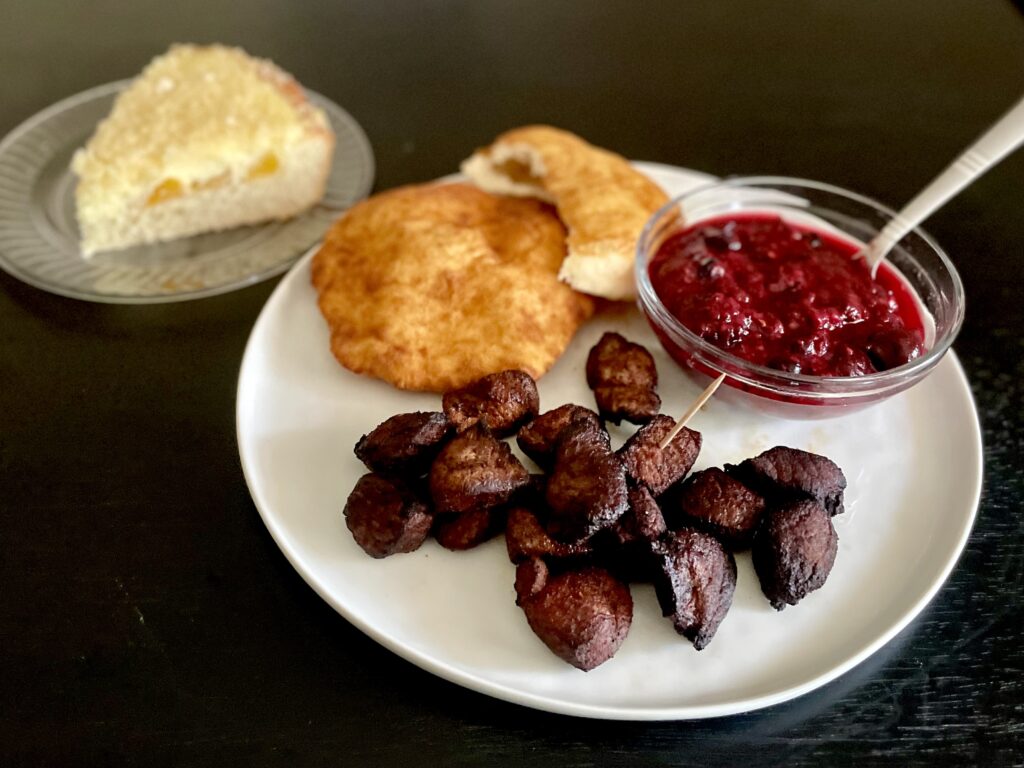
Thank you for reading and following along my state meal challenge journey! Next stop: North Dakota!

